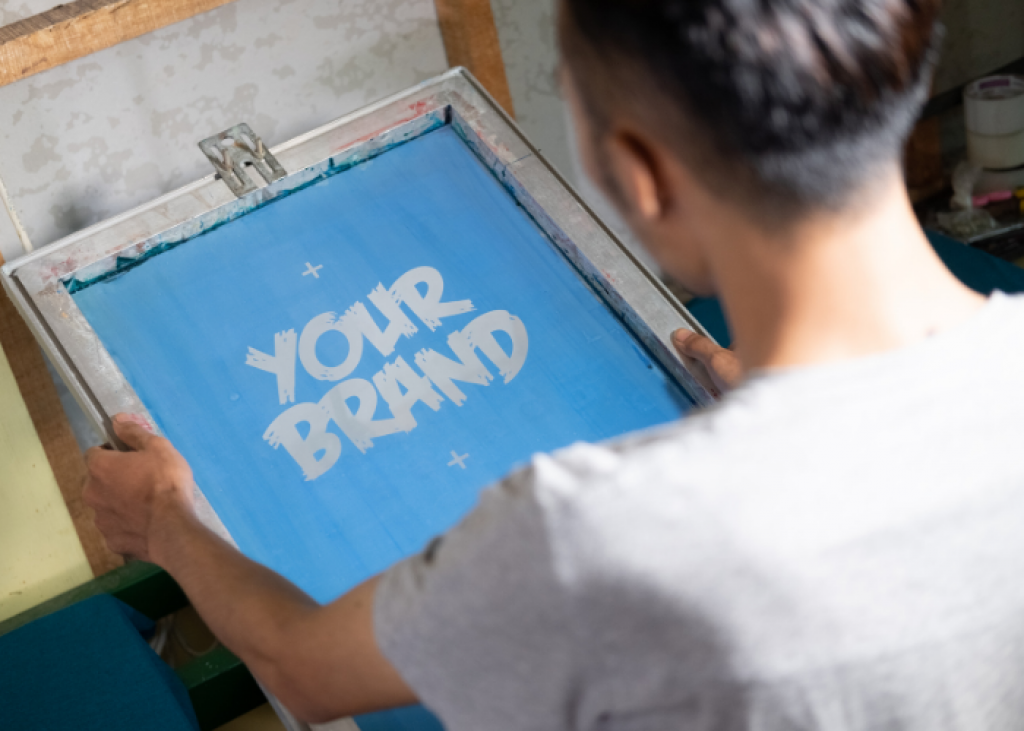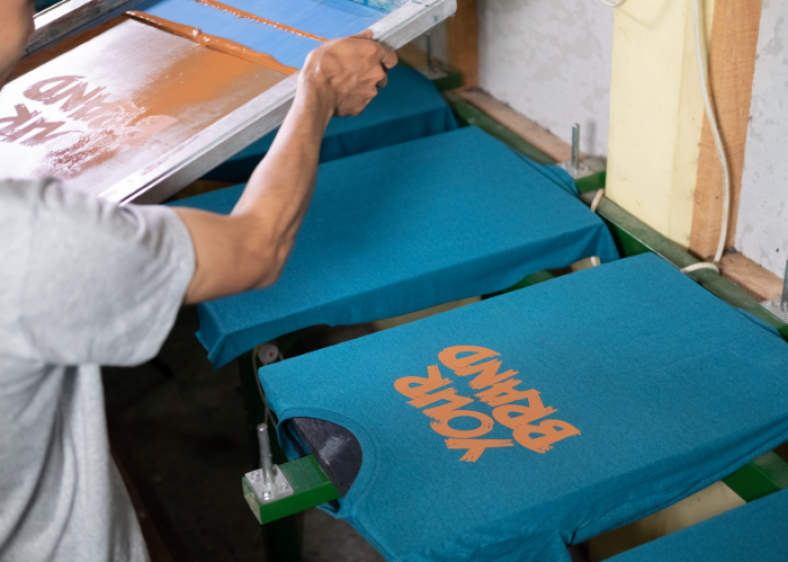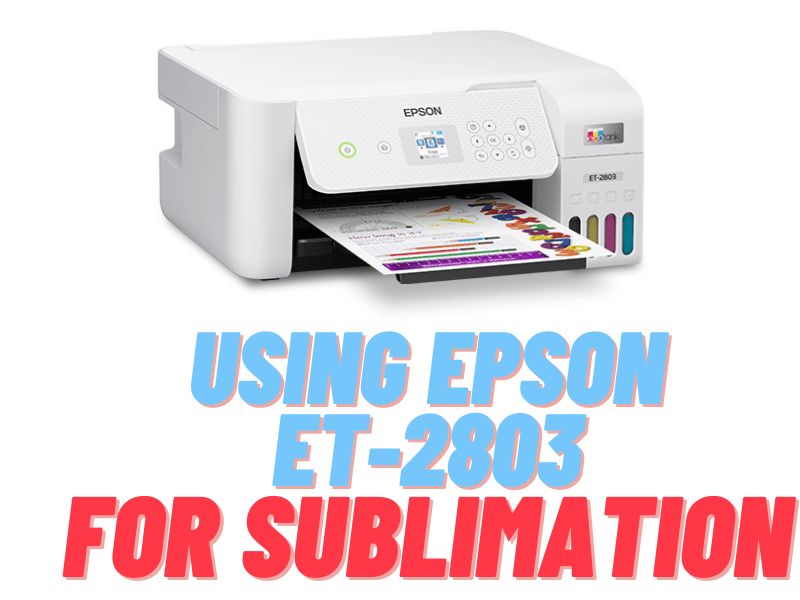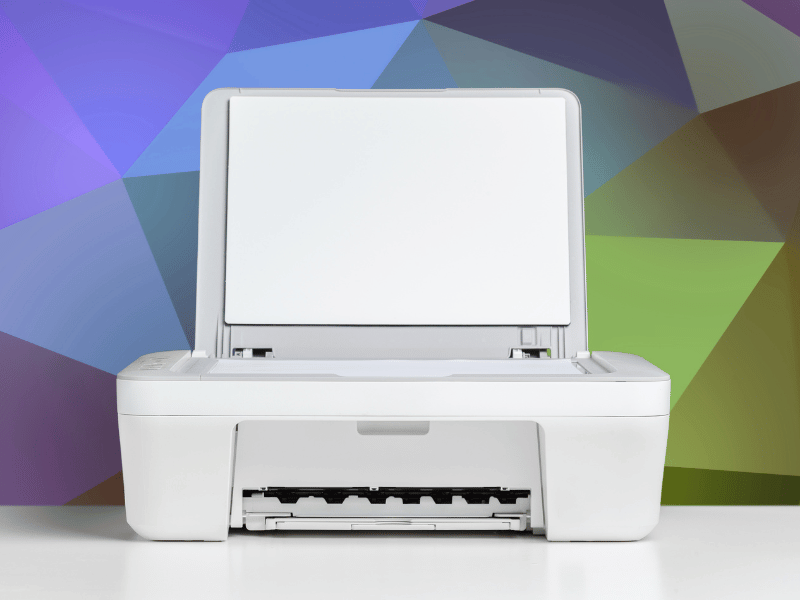In a nutshell, if you’re looking for a printer that can deliver on bulk projects, then go after DTF printing. It’s fast, efficient, and has few processes to complete. However, if you need quality prints with no need for customization, then screen printing will do.
Further, these two techniques offer unique print finishes. For instance, screen printing is best for anyone targeting a softer, retro, and authentic print finish. However, if your interest is a fresh, modern, and lively print finish, then direct to film printing will impress you. Remember, these are just a few of the noteworthy contrasts between DTF printing and screen printing.
To have a better idea of what’s the best printing method, read on for more contrasts between the two. This text also includes the pros and cons for both methods:
What’s Screen Printing?

This is a printing process that entails using a squeegee, dense ink, and mesh screen to transfer a stencil design. The common materials in this case are paper and fabrics. However, with certain inks, the technique can work on glass, plastic, metal, and wood.
How it works:
The basis of this technique is crafting a stencil design on a mesh screen. Once you set it up on the product, let’s say a garment, you can apply the ink on top. Thereafter, push it through the mesh to create a print on the material below.
Screen printing is also known as silk screening. While these techniques employ the same processes, the method of crafting the stencil design can vary. Also, the type of material you choose to use contributes to the difference. On that note, some stencil techniques include:
- Use of screen blockers to create the design on the mesh. It could be lacquer or glue.
- Using vinyl or masking tapes
- Use of light-sensitive emulsions
Designs from this technique can maximize one color shade or incorporate multicolored shades depending on the type of project. Even so, you can only apply one color at a time until you complete the design using separate stencils.
Pros:
- It’s cheaper when you work on bulk order
- Multicolor printing
- Can print on various materials besides all fabrics
- Durable prints
- Quality finish
Cons:
- It’s expensive to start from scratch
- Does not support personalization
What’s Direct-to-Film Printing?
This is a flexible and the latest printing tech available in the market. It entails the use of special films (PET) that you print your design on and use to transfer the image on the garment.
How it works:
This is a short printing process that imprints an image on a garment through a special film. With the help of heat and pressure, the image sticks onto the garment permanently. DTF printing tech is versatile. It applies to all types of materials including cotton fabrics synthetic, polyester, and silk. Further, it’s an economical printing method. In that, the printers are affordable to purchase and the process is short and pretty straightforward.
Pros:
- Life-like prints
- Durable prints
- Supports multicolor printing
- Endless choice of color
- Supports complete design personalization
- Can handle small projects that require different print designs
- works on all garments
Cons:
- Time-consuming compared to screen printing if you’re working on the same design.
DTF printing Vs Screen Printing:
Similarities:
- Even with the difference in the quality of prints, what cuts across is the durability of both prints. Both Screen and DTF printing print are long-lasting. They can withstand multiple washes and still standout.
- Both techniques accommodate multicolor prints.
Differences:
- Printing Process
Screen printing like the name requires the use of a mesh screen with a stencil design to transfer your design. On the other hand, DTF printing requires what we call a PET screen to transfer your design. Also, the process involves the use of a DTF printer while screen printing uses stencil designs.
- Print Quality
DTF printing has one of the finest print qualities from vivid design to finish. Unfortunately, screen printing is not a match. And that’s because you need a different screen for each color as well as details. But even so, the print quality is still commendable and quite durable. DTF works best on various fabrics but what’s astonishing is the details when dealing with a multi-color print.
- Color Option
DTF has a vast color option when it comes to printing. It allows you to print unlimited graphic designs with each guaranteeing life-like quality. Screen printing on the other hand limits you to a few color options. Even worse, it’s challenging to handle a complex color mix. Due to limited color options, this print method doesn’t support the level of personalization you’ll find in DTF printing.
- Cost-Effectiveness
Both designs are cost-effective. However, there are instances where screen printing is less cost-effective. For instance, when you handle large projects requiring the same type of print, then screen printing will do. It’s the cheapest method in this case. However, if you’re handling different designs, then it’s more costly since the cost of setting up each print screen is high.
DTF printing on the other hand is reliable whether you’re handling large or small projects. It’s flexible and inexpensive that screen printing when handling a bulk order that requires different print designs.
- Quantity
When talking of print quantity, there’s a significant difference between these two processes. While both techniques can handle large orders, the efficiency differs. For instance, screen printing entails creating a screen for each design. Therefore it may take longer to complete a multicolored print.
But with DTF, you can appreciate an efficient printing process even when it’s a bulk order. However, if you’re working on the same type of print on multiple products, then screen printing can be efficient. It handles the same type of print on bulk orders efficiently and quickly.
Final Take:
The choice between DTF printing and Screen Printing requires multiple considerations that are listed above. Screen printing for instance has been a reliable choice for many years. On the other hand, people are looking for the vivid design that DTF provides and also for being the latest technology. Therefore, sit down and decide which option has a stronger impact on your business and stick with that.




